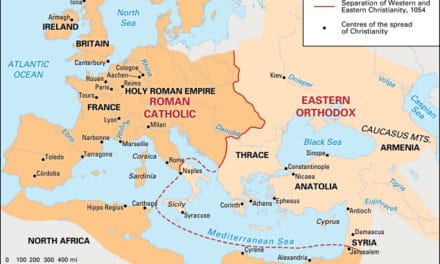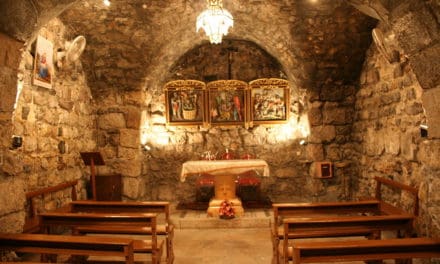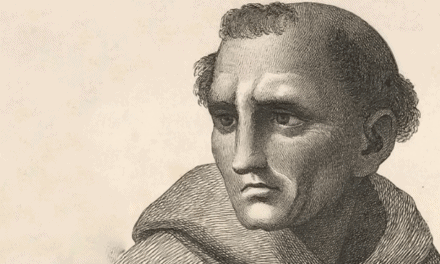This episode is titled – The Great Recession.
I usually leave house-keeping comments for CS to the end of each episode but wanted to begin this by saying thanks to all who subscribe, listen regularly, and have turned others on to the podcast.
Website stats tell us we have a lot of visitors & subscribers. Far more than you faithful ones who’ve checked in on the Facebook page & hit the “like” button. Can I ask those of you who haven’t yet to do so?
Then, if you’re one of the many who accesses the podcast via iTunes, you probably know how difficult it can be to find what you’re looking for there. Millions use iTunes as their podcast portal yet the search feature is clunky. So tracking down what you want can be a challenge. What helps people find content on iTunes is reviews. So, if you’re an iTunes user and like CS, you could be a great asset by writing a brief review for the podcast. Thanks ahead of time.
Okay, enough shameless self-promotion . . .
Christianity more than proved its vitality by enduring waves of persecution prior to Constantine the Great. When persecution was withdrawn & the Faith climbed out of the catacombs to become the darling of the State, the question was whether it would survive the corruption political power inevitably brings. While many thousands of pagans professed faith because it was the politically expedient thing to do, some sincere believers marked the moral corruption that took place in the church & forsook society to practice a purer faith in monasteries, as we saw in our last episode.
The institutional Church, on the other hand, organized itself in a manner that resembled the old Roman Imperial system. When the Empire crumbled under the weight of its own corruption, that fall accelerated by barbarian invasions, the question was, would Christianity fall with it?
The story of Christianity in the West is a remarkable tale of survival. So often in history, when a culture is swept away, so is its religion. Christianity has proven an exception. As often as not it endured when the culture changed. Such was the case in Europe and the events that followed the Fall of Rome at the end of the 5th Century.
When the Gospel first came to those urban centers which were the cultural heart of the Roman Empire in the late 1st & early 2nd Centuries, it was regarded as a Jewish reform movement. Its first converts were Jews scattered around the Empire and those Gentiles who’d attached themselves to the Jewish synagogues. But once these God-fearing Gentiles came to faith, they evangelized their Gentile friends. Following Paul’s example in speaking to the philosophers on Mars Hill, these Gentile Christians recast the Gospel in Greco-Roman terms, using ideas & values familiar to the pagan mind.
When I say “pagan” don’t think of it as the insult it is in our modern vernacular; someone void of moral virtue. By pagan, I mean those who practiced the religion of the Greeks & Romans with its pantheon of gods. In that sense, Plato & Aristotle were pagans. Zeno, the philosopher who developed Stoicism, was a pagan. These were all men who developed the philosophical framework that shaped the worldview of Greco-Roman culture & society. They asked some penetrating questions that provided the intellectual backdrop of the 1st & 2nd Centuries. Gentile Christians picked up these questions & used them to say they’d found their answers in Christ. Many other pagans found these arguments convincing & were won to faith. Some of the Early Church Fathers even appealed to the ancient philosophers in the formal letters they wrote to the Emperors on why persecution of Christians was bad policy. They argued for a promotion of the Faith as a boon to the health of culture, not a harm to it. Their defense of the Faith was couched in terms the Emperors were familiar with because they shared the same philosophical language.
My point here is that Christianity made an appeal to the Greco-Roman worldview it was growing in the midst of. So, what would happen when that society fell?
Also, the Church’s organizational structure increasingly came to resemble the Imperial structure. What would happen when that was dismantled? Would the Faith survive? Had Christianity grown too close to the culture?
The answer is à Yes & no. The Empire’s demise did pose a set-back to the Church. But we might ask if maybe that was good. The institutional Church had in many ways deviated from its purpose & calling. Not a few bishops were far more concerned for their political power than for their role as spiritual shepherds. In many minds, spiritual & earthly power had merged into the same thing.
Rome’s fall allowed the Faith to break away from the political attachments that had corrupted it for a century & a half. But there’s little doubt that from the 6th through 9th Centuries, Christianity suffered a kind of spiritual declension. Over that 400 years, the total number of people who claimed be Christians dropped, fresh movements of renewal declined, & moral & spiritual vigor flagged. While there were exceptions, overall, Christianity lost ground, giving this period of time in Church history the title, as Kenneth Scott Latourette calls it, the Great Recession.
Following the timeline of Church history at this point becomes difficult because so much was going on in various places. So for the balance of this episode, I want to give a quick sketch of both the many reversals & few advances Christianity saw from the 6th thru 9th Centuries.
When the Goths, Visigoths, & Ostrogoths moved in to pick clean the bones of the Western Roman Empire in the 5th Century, something remarkable happened. While they helped themselves to the wealth of the Empire, they also adopted some of the Roman customs they admired. But nothing was so surprising as their embrace of Christianity. In truth, these barbarians were already what we’d have to describe as nominally Christian. Their invasion of & settling into Roman lands greatly furthered their identification with the Faith.
Remember that in the ancient world, war was more than just an attempt to take land & plunder; it was a contest of faiths. The ancients believed armed conflict was a kind of spiritual tug of war. The mightiest god gave his or her people victory. This is why when one people defeated another, the loser’s religion was often wiped out.
But the Germanic barbarians tended to embrace Christianity rather than destroy it. There was something different in the message of Christ from their ancient folk faiths that drew and converted them. So when they took down the Roman Imperial structure, they left the churches intact. Bishops continued to exercise oversight in their flocks.
Unlike other religions, Christianity was super-cultural. It wasn’t just the faith of one group; it potentially embraced all. Even those who rejected the Gospel recognized it wasn’t merely the spirituality of a specific ethnic group. Its message transcended culture to encompass all humanity.
That was the situation on the north & northeastern borders of the Empire. The situation in the south was very different. In the 7th Century, Islam swept out of Arabia to conquer the Middle East & North Africa. The Muslims managed to get a foothold in Spain before the armies of Charles Martel stopped them pushing any further North in 732. Where Islam conquered, it replaced native religions. Enclaves of determined Jews & Christians eked out an existence but by & large, the Crescent replaced the Cross throughout the Middle East & North Africa.
While there’s no specific date or event that marked the onset of the Great Recession, we’ll set the year 500 as the starting point. Here’s why …
In 476 the last Roman Emperor was deposed by the Goth leader Odoacer. This marks the end of the Western Roman Empire. The capital then shifted undisputedly to Constantinople in the East.
20 years later, in 496, the Frank king Clovis was baptized. This marked a new era in which Germanic rulers became the standard-bearers of the Faith instead of Romans.
Then in 529, the Eastern Emperor Justinian closed the Schools of Athens. These academies were the last official symbols of Greco-Roman paganism. Justinian ordered them closed to signal the final triumph of Christianity over paganism.
In that same year, 529, Benedict built his monastery on Monte Cassino as we saw in our last episode. The Benedictine Rule was to have a huge impact on the course of the Faith in the West.
While Christianity seemed to stumble in many of the places where it had been installed 3 & 400 years before, it continued its relentless spread into new territory. It was during the early 6th Century that the Faith went up the Nile into Sudan. In the latter part of that century, Pope Gregory sent missionaries to Britain and in the early 7th Century the Gospel reached China.
But the 7th Century was when the Arab conquests began. In less than 20 years after Mohammed’s death, Islam had raised its banner over, Israel, Syria, Mesopotamia, Persia, & Egypt. Before the end of the Century they’d conquered all North Africa, including the capital at Carthage and by 715 had taken Spain.
If you’ve been listening from the earliest episodes, you know that these lands the Arabs conquered had a rich Christian history, especially in North Africa. Alexandria & Carthage were home to some of the most prominent Christian leaders & theologians – Athanasius & Arius, Alexander, Cyril, & Augustine, to name a few.
At the same time, the Arabs were spreading Islam across Christian lands, up in the Balkan peninsula & Greece, pagan Slavs moved in. In 680, Asians called Bulgars crossed the Danube River & set up a kingdom in what had been the Eastern frontier of the Empire.
Between these losses to the Arabs in the South & the Slavs & Bulgars in the East, about half the total land area that had been Christian territory was lost.
The 8th Century saw large numbers of German tribes come to Faith. But the 9th & 10th Centuries were marked by repeated invasions of pagans from the distant north. These Scandinavians raided the shores of northern Europe, Britain, and all the way to Russia. They delighted in looting the many defenseless churches & monasteries they included in their conquests.
These Scandinavian raids helped shatter the fragile unity the Carolingians had pulled together in Europe. As society broke apart into minor political regions, the quality of spirituality in the churches declined. Discipline in the monasteries grew lax. Bishops focused more on secular than spiritual matters. The clergy grew corrupt. The Roman Papacy became a political football.
The Eastern church of the 8th & 9th Centuries was rent by a theological controversy over the use of images. In the 9th Century, Muslims conquered Sicily & Crete, & established a beachhead in southern Italy.
In China of the mid 9th Century, Christianity experienced a wave of fierce persecution. This was due to the Faith having been too closely identified with the previous dynasty.
As we come to the dawn of the 10th Century, there were several positive signs the Faith was growing again in the regions where it had declined. Churches were planted among the Slavs & Bulgars. The Faith extended its reach into Russia & there are indications the Church in India grew during this time.
One sign of a positive spiritual turn took place in Eastern France in a place called Cluny. In 910, Duke William of Aquitania founded a monastery on the Rule of St. Benedict. The abbots selected to lead it were men of tremendous character & piety. They were determined to correct the lax moral attitudes that had become all too common in monastery life.
The Clunaic reforms not only reinvigorated monastic life, they established a new hierarchy for monasteries. Prior to Cluny, monasteries were connected to & in a sense answerable to local bishops & nobility. Cluny and the monasteries that came from it were directly answerable to the Pope. This became an important element of church life when during the 11th Century, the popes tried to un-tie the Church from secular powers.
While the monastic life may seem strange & at the same time stereo-typical of the romanticized view of Medieval life we have today, monasteries acted as repositories of the wisdom & learning of previous generations. As wave after wave of invaders washed over Europe, and society was shattered into a thousand bits, monasteries remained cultural lighthouses.





